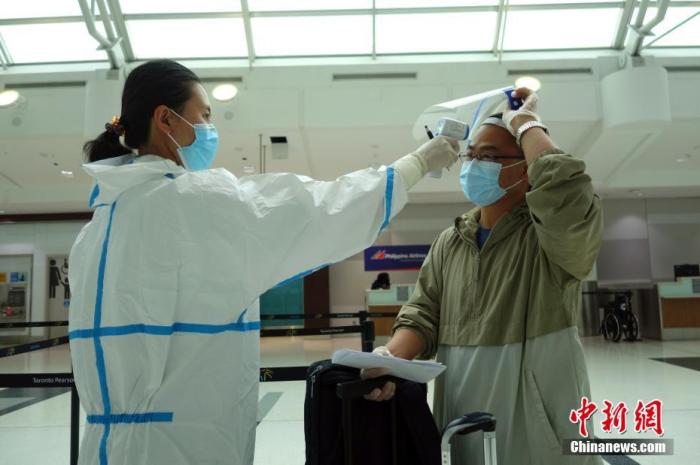China News Service, Toronto, January 7 (Reporter Yu Ruidong) Canada has implemented a new temporary entry and epidemic prevention order for air passengers on January 7.
Before departing for Canada, all passengers must, in principle, undergo a new coronavirus test and obtain a negative certificate.
Specifically, all passengers 5 years of age and above, regardless of their nationality, must provide the airline with a negative certificate of a new coronavirus test conducted within 72 hours before departure before they are allowed to board a flight to Canada.
The detection must be one of two methods: nucleic acid PCR or loop-mediated isothermal amplification (LAMP).
On December 31, 2020, local time, customers shopped in a large warehouse shopping store in Toronto, Canada.
Bilingual signs in Chinese and English reminding you to maintain a safe distance from epidemic prevention are prominently posted in the store.
Photo by China News Agency reporter Yu Ruidong
However, the actual measures have been slightly adjusted compared to the plan announced about a week ago.
Passengers departing from the Caribbean or South America can use the test certificate 96 hours before departure in the first week of the implementation of the new regulations.
Passengers departing from the French Saint Pierre and Miquelon Islands and Haiti are exempted for one week and two weeks respectively, but Canadian officials urge them to be tested for the virus immediately upon arrival in Canada.
After passengers arrive in Canada, Canadian border officials and public health officials will conduct inquiries, observations and screenings of their health conditions, and review their isolation plans.
All travelers who are allowed to enter Canada must still complete a full 14-day mandatory quarantine and download and use the officially designated mobile phone application in order to be tracked.
Canadian officials emphasized that all current relevant entry restrictions still exist for foreign nationals traveling to Canada, and the Canadian government will continue to implement or strengthen these measures according to the situation.
Since mid-March 2020, the Canadian government has imposed entry restrictions on non-Canadian citizens or permanent residents, but immediate family members of Canadian citizens, practitioners in certain "essential" industries, and international students are exempted.
The Ontario government has provided voluntary and free COVID-19 nucleic acid tests for international air passengers at Toronto Pearson International Airport on January 6.
The test results will be summarized in the province’s health system within 48 hours, and the public health department will follow up on positive cases.
The governor of the province, Ford, said that currently more than 60,000 international passengers enter Toronto International Airport every week, and the authorities cannot take any unnecessary risks.
Data map: On September 9, 2020, local time, at Toronto Pearson International Airport in Canada, the staff of Hainan Airlines checked the temperature of passengers who were preparing to take a direct flight to Beijing.
Photo by China News Agency reporter Yu Ruidong
Ontario reported 3,519 new cases and 89 deaths on the 7th, both setting a single-day record.
Quebec, the country with the largest number of cumulative cases, will take the lead in imposing a curfew. In principle, people are prohibited from leaving their homes between 8 p.m. and 5 a.m. between January 9 and February 8.
British Columbia decided to extend the social gathering ban, which began in mid-November, to February 5.
As of the evening of the 7th, a total of 635,134 cases have been reported in Canada, with 8,341 newly added in a single day; 538,267 recovered cases and 16579 deaths.
(Finish)

